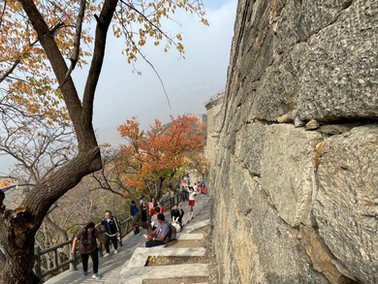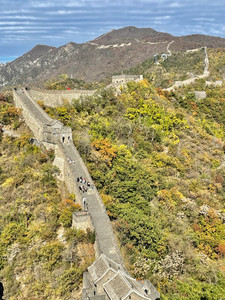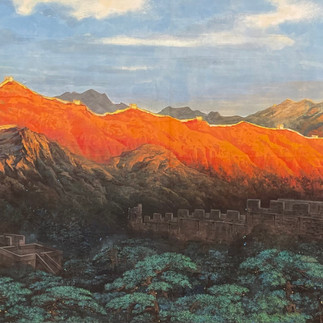Plague and Pandemic in China
- gretsch2102
- Nov 25, 2023
- 3 min read
Updated: Nov 29, 2023
Combining writing research with adventure travel is the ultimate experience!

I engaged in a lot of research for my last novel, The Valley. Diving down a multitude of rabbit holes gives me a broad context for the theme of a community battling to survive a deadly pandemic and the collapse of societal order. Serendipitously, I was lucky to travel to China recently for work, another country with a long and disastrous history of plague and pandemic.
Epidemics in China
Epidemics have played a significant role in shaping the course of Chinese history, leaving indelible marks on the nation's social, political, and cultural landscape. Throughout various dynasties, China has faced a multitude of infectious diseases that have altered the region's trajectory and influenced its governance, societal structures, and medical advancements.
Above: Around the fascinating city of Beijing. The Forbidden City, The Temple of Heaven and The Summer Palace.
Some of China's earliest recorded instances of epidemic diseases date back to the Shang and Zhou dynasties (16th century BCE to 256 BCE). The oracle bone inscriptions, a fascinating source of historical information from this period, contain references to outbreaks that profoundly affected the population. These epidemics often led to social unrest, weakening centralised authority and even contributing to the rise and fall of entire dynasties. It's easy to see why the theme of devastating pandemics features so prominently in survival fiction. Plague and pandemic survival fiction lies firmly anchored to reality within an accessible historical context.
During the Han Dynasty (206 BCE to 220 CE), China faced the devastating Antonine Plague, believed to be either smallpox or measles. This epidemic, likely imported from Europe and Asia along the Silk Road trade routes, caused a significant decline in the population of the Han Empire and ravaged agricultural productivity. The subsequent collapse of the Han Dynasty has been attributed, in part, to the repercussions of this widespread infectious disease.
Above: The Great Wall, built between the 7th Century BCE and 1446 CE. It may have been effective at keeping out human enemies (hotly debated) but ineffective against disease and pandemics.
The Tang Dynasty (618–907 CE) suffered devastating consequences during the 'Great Tangshan Plague'. This outbreak, possibly bubonic plague, led to another significant reduction in the population, economic decline, and social upheaval. The weakened state of the Tang Dynasty likely made it susceptible to external pressures, ultimately contributing to its decline.
Moving forward to the 19th century, the Qing Dynasty (1644–1912) faced the challenge of the third cholera pandemic. Cholera, a waterborne disease, spread rapidly across China in 1919 and led to an estimated 300,000 deaths. The outbreak probably started in Manila after lingering from previous outbreaks in the Philippines. The first reported cases were among Filipino migrant labourers transiting through Shanghai. The epidemic swept over East Asia until October 1919.
Above: Shanghai, the gateway for the 1919 Cholera pandemic.
The early 20th century saw the Spanish flu pandemic spread to China, adding another layer to the country's history of infectious diseases. The weakened state of China, amid political turmoil and social upheaval, made it particularly susceptible to the impacts of the deadly influenza virus.
In more recent times, China battled the severe acute respiratory syndrome (SARS) outbreak in 2002-2003. The emergence of this novel coronavirus highlighted the interconnectedness of the modern world and the speed with which infectious diseases can spread globally. The ongoing COVID-19 pandemic, caused by the SARS-CoV-2 virus, represents the latest chapter in China's history of epidemics.
Above: Some of the amazing artwork found in the The Great Hall of the People, Beijing.
If you want to see where all this research has led me, grab a copy of my book, THE VALLEY, from Amazon!




































Comments